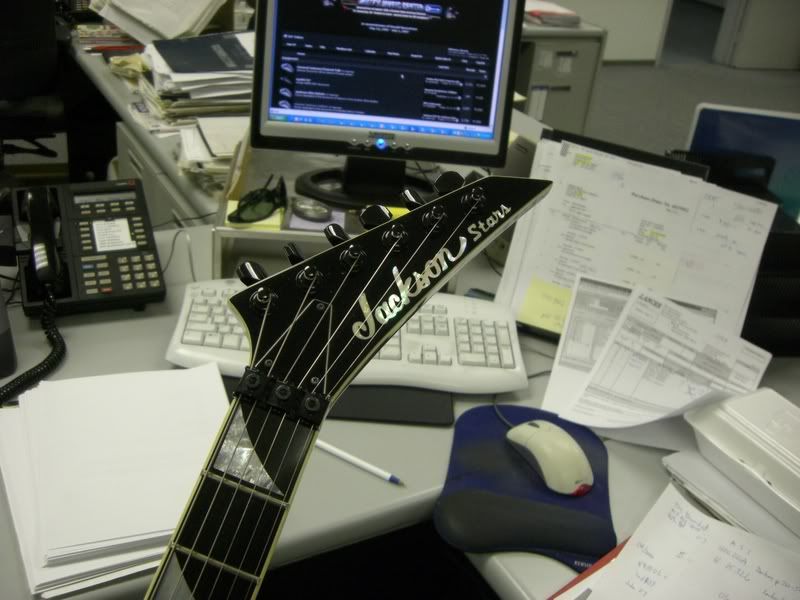My MOP order came in Monday, and I have cut my first 'test' inlay (for the 1st fret), and I was wondering if any JS owners could post a picture or two showing a closeup of their inlays. I have the iridescent MOP (white/pink/green), and it has lots of interesting patterns in it to choose from. The test piece looks damn good, but I figured that I would ask for some pics so I could see what kind of patterns they cut from the MOP for the JS guitars.
I am writing up the process as I am doing it, and I will have pics too. I will post the info when I have successfully completed the job. I have to say that this MOP makes the MOTO look like the toilet seat material it is...lol! These blanks are cool, and I probably have enough material to make three sets of inlays.
If you can post closeup pics of your inlays, I really would appreciate it. I want this to turn out well and I think this would really help. I have scoured the net looking for MOP pics but it is hit or miss (mostly miss) finding examples to work with. I figured that JS owners have exactly what I am aiming for, so what the hey.
Thank you!
I am writing up the process as I am doing it, and I will have pics too. I will post the info when I have successfully completed the job. I have to say that this MOP makes the MOTO look like the toilet seat material it is...lol! These blanks are cool, and I probably have enough material to make three sets of inlays.
If you can post closeup pics of your inlays, I really would appreciate it. I want this to turn out well and I think this would really help. I have scoured the net looking for MOP pics but it is hit or miss (mostly miss) finding examples to work with. I figured that JS owners have exactly what I am aiming for, so what the hey.

Thank you!









 I drilled a 3/16ths hole in each one (just above the center and a bit towards the corner of each inlay), then quickly heated the old inlay with a mini heat gun while prying the top of the hole with a regular jewelers screwdriver until the top of the inlay softened and lifted. Then I slid a thin metal blade under it and continued heating and lifting.
I drilled a 3/16ths hole in each one (just above the center and a bit towards the corner of each inlay), then quickly heated the old inlay with a mini heat gun while prying the top of the hole with a regular jewelers screwdriver until the top of the inlay softened and lifted. Then I slid a thin metal blade under it and continued heating and lifting.
Comment